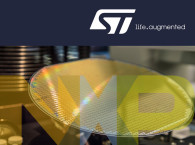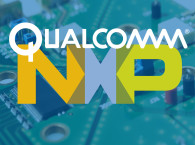
Companies such as Dolby and DTS are here, obviously, and so are all the microspeaker, MEMS, and balanced armature manufacturers, as well as many of the key DSP technology companies and any semiconductor company active in audio components - all targeting the growing market of mobile audio in all its forms. Headphones and earbuds of any type and shape; communications and wireless audio transmissions at home or on-the-go; and, of course, the new class of mobile speakers now powering the trending voice recognition applications and personal voice assistants, all are as much the focus at MWC as the new smartphones or the technology for network operators, which was at the foundation for these events.
This might be of marginal interest for any person who just cares for high quality, traditional, audio experiences, but as any engineer in the industry knows, these are not only some of the markets fastest growing segments (where money comes from) but actually it would be hard to dismiss quality notions from current audio implementations in this space, since the mobile industry is very much aware of the growing consumer interest toward high-end audio and HRA experiences. In fact, it's precisely the interest generated by the mobile industry that's powering many of the ambitious R&D budgets in audio manufacturing these days. Also, this is the space where cutting-edge concepts and technologies are finding the room to actually make it to market. More than in any other consumer space.

Just as an example, which in terms of technology is much more demanding and hence representative of what I'm saying, there were more new 4K cameras and high-quality image generating devices introduced at the MWC show than we can find at the National Association of Broadcasters (NAB) convention in Las Vegas, NV. In fact, looking at the volume of 4K and higher resolution sensors, that's by a factor of hundreds of millions... And while broadcast applications are still struggling to update their "pipes" to carry 4K signals all the way through, consumers are currently uploading and sharing 4K video on mobile networks and across the Internet.
Another sign of how important this space is getting, is more press covering the GSMA congress than any other show I've recently attended, including CES. No wonder the GSMA has already expanded the format to Shanghai and, starting this year, also to San Francisco, CA (September 12-14, 2017 www.mwcamericas.com). In fact, I predict that the San Francisco event could quickly grow to outpace the current Barcelona event if the GSM Association allows. After all, it makes much more sense to be closer to Silicon Valley. And certainly for the audio industry, it will be much more attractive to engage with the dominant players in this field, including the large semiconductor companies, software platforms, and services in a smaller, more focused event - at least for a while...

At MWC 2017 we've seen impressive demonstrations of new audio applications now being implemented on mobile devices starting with far-field voice capture and recognition using the latest generation microphones with beamforming and acoustic compensation. We've seen a new generation microspeakers, challenging the laws of physics to produce loud and clear sound that would be hard to guess where it originates. Voice applications now being implemented in all sorts of low-power and low-cost devices, including DSP and sophisticated algorithms implemented directly on new generation microprocessors. And we are seeing very promising implementations of audio processing, including bidirectional communications with artificial intelligence engines that power smart services and voice assistants such as Alexa or Siri, being transferred directly to the cloud.
The low-power and low-cost platforms that are being announced for mobile devices are able to support highly intensive processes of acoustic and noise compensation that no audio manufacturer could even dream of integrating in its products a few years ago. Now, they will be able to integrate those into any low-cost speaker and make sure that the user experience will be consistent, independently of where that speaker is used - in a living room, kitchen, or the backyard. The sound quality is already quite good, certainly for the parameters for which current Bluetooth speakers are judged, but sometimes - depending on the actual drivers and design - able to rival hi-fi speakers.
Compared to CES, MWC 2017 was also a mind-blowing demonstration of forward lookingness as far as the adoption of new standards is concerned. In the mobile sector, USB-C is now THE standard connector. And I was surprised to see some of the early development platforms that are being used for implementation and testing of new Bluetooth 5 products. The new Bluetooth standard promises to evolve both in the direction of wide area networks, with a convergence toward IoT services and, in the other extreme, an evolution toward personal area networks, with the evolution to low power and short range but larger bandwidth applications. All reasons for the mobile industry to be waving the Bluetooth 5 flag very high and leaving no doubt it will be decisive in the way the standard will be completed and implemented. And the smartphone manufacturers know that with 5G networks coming, they'll need something like Bluetooth 5 on the device.

Very interestingly, at MWC 2017 there were multiple examples of applications supporting high-quality audio and high-resolution streaming because of the potential to move consumers to quickly adopt the new 5G network services and devices. According to a GSMA report published at MWC 2017, commercial 5G networks will begin to be widely deployed at the start of the next decade and, by 2025, will provide coverage to a third of the world's population. "5G networks will provide an enhanced broadband experience of up to 1 Gbps and below 10 ms latency, and provide the platform for cloud- and artificial intelligence-based services," the GSMA promotes. "5G connections are forecast to reach 1.1 billion by 2025, accounting for approximately one in eight mobile connections worldwide by this time," the association predicts. So, high-resolution audio streaming is certain to become a consumer reality very soon, and lead by the mobile space.
But there's another very interesting trend that's noticeable from this event. As I wrote before, the audio industry is increasingly dependent of standards and technologies that it doesn't define or is even able to influence in a significant way. And now the mobile industry speaks volumes and consequently is able to dictate the rules. For the electronics industry, the difference in terms of shipping volumes between what is happening in the mobile industry and any other is so disproportionate that it becomes harder for any other application segment to have any say on component specs .
This is decisive in terms of new product topologies because there is simply no way an audio manufacturer is able to achieve significant gains using more traditional designs on a PCB implementation level than what the mobile industry is generating currently on the chip level. Semiconductor companies are powering this evolution in such an impressive way that today we are able to find microprocessor platforms with complete audio systems and any level of integrated peripherals we might wish for at the IC level, with higher specs than anything else. And there is simply no way to beat the cost in quantities and the benefits of low power. Add to that the availability of complete IDEs, free evaluation platforms, software development libraries and APIs, and it becomes impossible to compete.

Does this mean that audio manufacturers should jump at the opportunity to embrace those same mobile-driven IC platforms for their new-generation developments? Well, that's the conundrum. The mobile industry and associated electronics suppliers and manufacturers are currently working in a completely new business environment - assuming that everything they do today will be old story in two years or even less - as it happens with smartphones. So nothing is planned with the long-term longevity that traditionally an audio product requires. The benefits of using a new IC platform or any component available in high volume for mobile platforms are simply overwhelming and hard to ignore. But they will no longer be manufactured two years from now.
No wonder there are so many high-end audio companies still working on tubes... Maybe in the future even tube designers will consider options for a user interface that can be assessed from whatever mobile device users will be carrying, since apparently - 10 years from now, if we believe the trends at MWC 2017 - no one will consider turning a knob any longer. Users will be shouting voice commands at their tube amplifiers.







